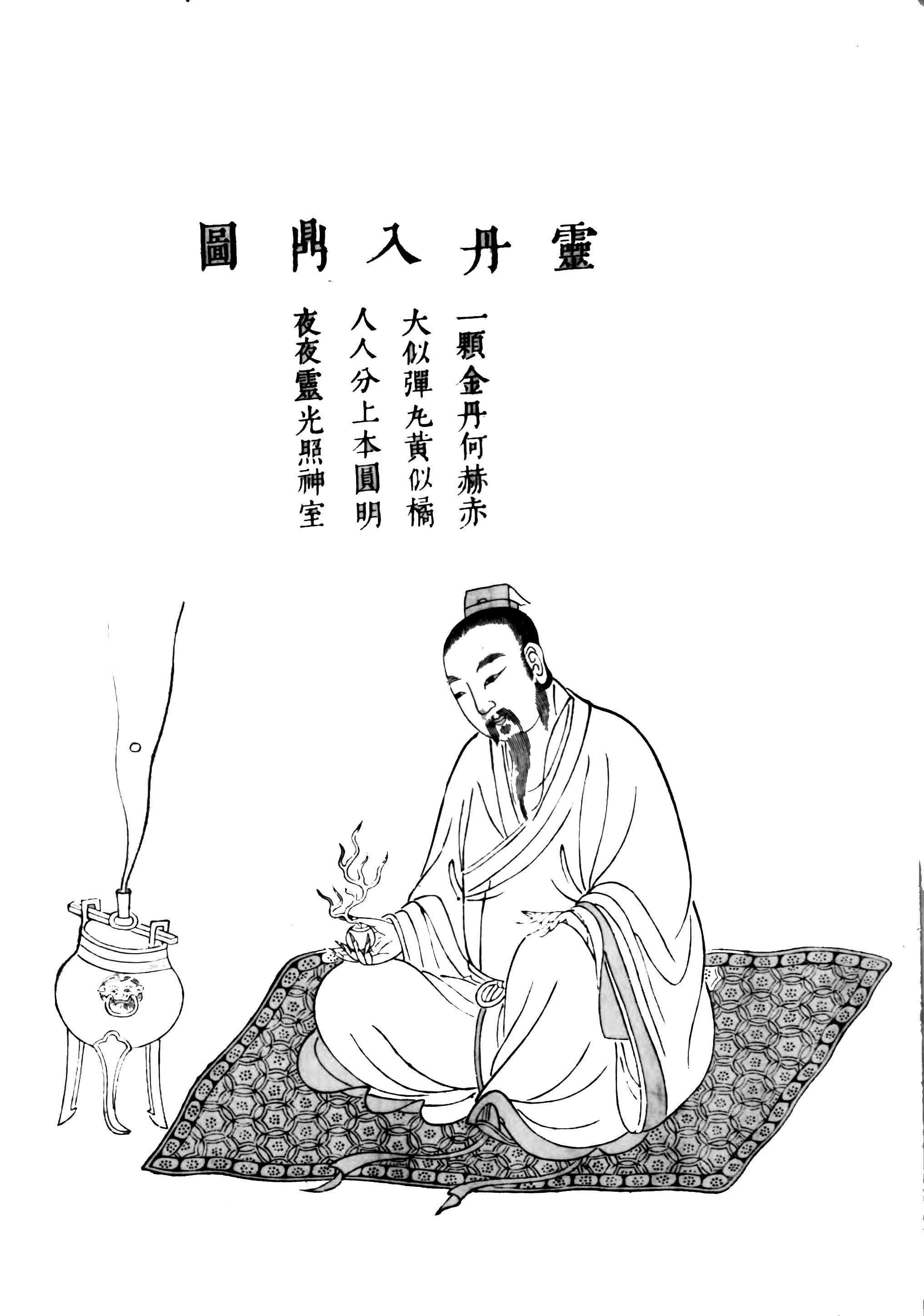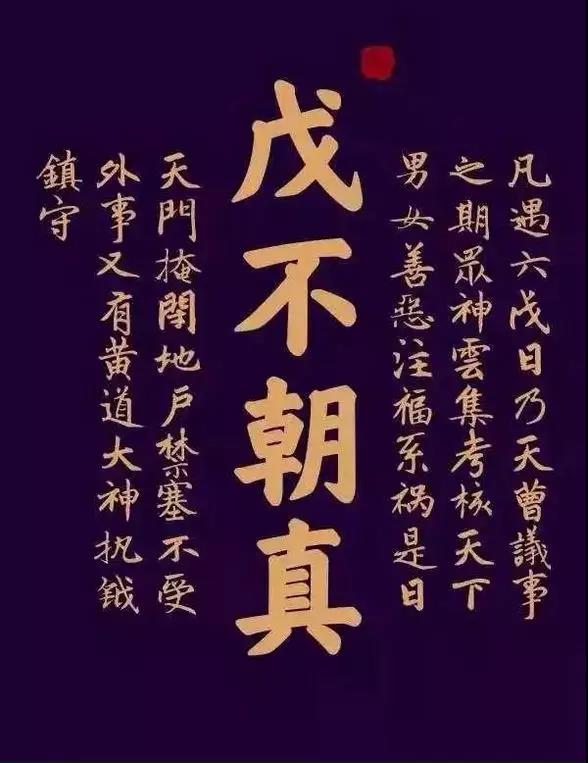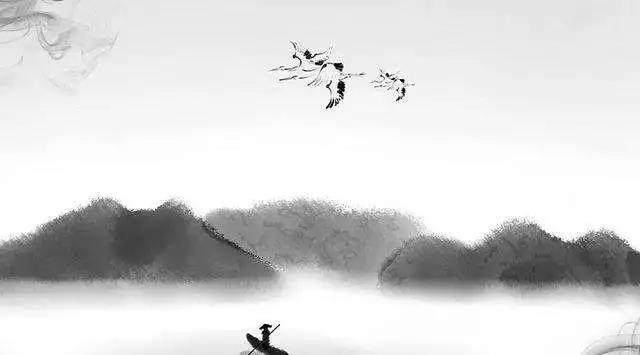The original meaning of Te is found it the very title Tao Te Ching, is the power[iv]. It is commonly translated virtue, and this meaning cannot be excluded neither: the task is to train the virtue as a spiritual strength. Socrates gives his pupils a mere intellectual training in understanding the old attic virtues as lost values that should be restored. So this point is crucial. The intellectual training is presented in parallel to the physical. The verb is gymnazein to make exercises (without having Clothes on: gymnos means naked). The gymnazein is used metaphorically about the intellectual training. There is, however, no relation between the bodily and the intellectual training. But in Chinese tradition, quite the opposite was and is the case: here, the spiritual strength is generally combined with the training of the body. This is seen especially in the Chai Ch’i. Neither does Lao Tzu’s former mentioned “wu wei”[v] express weakness, lack of decision, but spiritual strength: in “doing nothing”, you do unite yourself with the Tao, so that you are fulfilled with the Te and “nothing is left undone”. Here we have the crucial difference between Chinese and Greek philosophy: The Chinese Philosophy – and not in the smallest degree the Taoism – combines insight, harmony, equilibrium with personal and perhaps universal strength. The strength has also a spiritual dimension. This is simply not the case in the Greek tradition. Socrates, for instance, indeed had been a soldier, a so called hoplite, and during the rest of his days we find him brave and wise in the same perspective. He had been very strong, had gone barefooted through snow, had left the battle-field as the last one etc. – but this strength is not emphasized in connection with his wisdom.
On the other hand, on cannot come to classical Greek virtues like courage and sophrosyne, in the meaning of modesty and self-control, without having some strength in mind and body. The Greeks indeed accentuated the training of the body. But apparently is spiritual strength itself not emphasized explicatively in the Greek tradition as directly connected to wisdom, insight, having virtues etc. It seems that the Greek Eros in taming often replaces the spiritual ethical strengthening in the Chinese tradition. In the dialogue Phaedrus, the soul is allegorized with a chariot with two horses [vi], apparently representing the Eros with it’s to urges: a white horse, driving up, and a black horse, driving down. The driver – apparently the Nous, the reason – must then harmonize and balance the two opposite forces in a very Chinese way, but it has not the strength in itself.
In some sense, the Eros must be conceived as the strength, pointing at the Te, in another sense it points towards the Tao itself; we shall return to this later.
The spiritual strength is general in Chinese tradition in combination with the training of the body. This is seen especially in the Chai Ch’i. It is the spiritual training itself that is the crucial dividing point. The Eros as such can exceptionally take the place even as the Tao itself: in Plato’s dialogue Symposium, Eros is the seek for ones lost other half-part[vii].¨ The theme of duality: the Chinese conception of Yin and Yang versus Pythagorean teaching. The theme of duality is expressed in the relation between Yin and Yang, where these are balanced in harmony. This is stressed in the Taoism, but it is not invented by this school. It is found all over in the different Chinese schools of philosophy. We also find Yin and Yang in a school of its own, the Yin-Yang Chia, represented by Tsou Yen. The very words seem to appear for the first time in a commentary to The book of Chances, I Ging[viii]. Taoism is, as mentioned, simply grounded on I Ging.
Also in the western philosophy, we find the opposing of contrasts as principles, were the contrasts carry each other, two and two; but in the Chinese conception of Yin and Yang, they also contain a little point of their opposites. This seems to be a more specific Chinese way of thinking.
But especially the Greek Philosophy states the contrasts as the thought that oppositions carry each other is as mentioned also found in the western philosophy; it is already found among the pre-Socratic philosophers, especially Pythagoras and the Pythagoreans. Here we find a table with two pairs of opposite categories, called archai, principles, twines[ix]. According to the view of duality, presupposed in this table, no unifying principle is needed, no unity precedes the duality: the One and the Many are two such opposite categories to be seen at the same level. The duality does not imply that everything is divided into two worlds, such as we find it in radical dualism in some western philosophy. But there is neither a specific unity to sustain a radical monism, although everything is related to everything. The final inspiration for duality in the Chinese conception of Yin and Yang and in the Greek Philosophy is the contrast between night and day, dark and light, winter and summer etc. Thus we find Yin representing the darkness, the night, the winter etc., and yang the light, the day, the summer, the light etc. This is also the case for the Greek duality: the light and the darkness are also found among the archai-pairs in the Pythagorean table. But in the Chinese duality, there is also a theme of gender, Ying representing the female, Yang the male. This is not found in the twine-table of opposite categories by the Pythagoreans. Here, on the other hand, we find the difference between Good and Evil – the light is the good, the darkness is the evil. This point towards stronger dualism and is alien to the Chinese way of thinking. Here the “Good” is the balance between Yin and Yang, the “Evil” is the lack of harmony.
The duality between female and male is found elsewhere in the Greek tradition: in Plato’s Timaeus we find the cosmos as a child of the male paradigm, and the female receiver of his imprinting. So here the duality male-female is inscribed in a triad (not ‘triad’ in the sense, that the duality presupposes a unity). We shall return to this later. But the basic idea is the same in the Chinese and in the Greek tradition: it is possible to think in contrasts in a way, where they so to speak
Only need each other and no other principle to harmonize them. On the other hand, in both traditions, it is also possible to think contrasts as carried by a third thing: in China, we find the Tao, and in Greece we find Logos and ‘Being’ and other concepts.
The theme of the way
The concept of Tao in Taoism and its Greek parallels, especially the Logos of Heracleites. Generally in the Chinese philosophy, the Yin and Yang must be harmonized. Originally, they were constituted in a balance; in the Taoism, the Yin and Yang in balance is coming from the first principle, the Tao; or it can be said, that the Yin and Yang in balance is established by following the Tao as the Way. This balance, however, can be disturbed; but again, the Tao makes it possible to restore this harmony. The concept of Tao of course neither can be translated to Greek nor to English. Since it is not only the central concept of the whole Taoist philosophy, but also is even an older word which gets more specific meaning in the Taoism, it must be taken as an idiomatic Chinese concept.
In comparing Taoism and Greek philosophy, we must – none the less – try to find concepts pointing in the direction of Tao. We can take the former mentioned Empedocles into consideration: In the Strife, we find the battle for power, the Yang; in the Friendship, we find seek for peace, the Yin – and the continuing changes between these express the Tao.
We have mentioned that the Eros is also to be seen as the force of the Greek Philosophy; both Taoism and Greek Philosophy are in need for such a force. In common Greek comprehension, Eros expresses Greed; seek for Power – that is, the Yang. But the Greek Philosophy is not just such a Yang way of thinking. The Eros, as described in Plato’s Symposium, really is the harmonizing principle, were One seeks ones own lost other half-part. Greek philosophy actually seeks harmony through Eros not only as the force that should be tamed by virtues such as sôphrosynê/ modesty,good and righteousness; Eros can itself be seen as the harmonizing principle, corresponding to the Tao. As mentioned, the word for ‘strength’ in Taoism, Te, also in itself has this meaning of virtue in the sense, that the force is not a blind, untamed force. The Tao thus is the way, were nothing goes purely accidentally, but according to an order, that successively shows itself. In some sense, you must be virtuous in order to follow the way, the Tao – in another sense, the virtue is, that you simply follow this way!
In the poem of the historical Parmenides, Peri physeôs, On nature, and also in Plato’s dialogue named Parmenides, we find Hodos, Way: we must choose the right way to the truth, conceived as ‘oneness’: in the poem, the young man is brought to the Goddess of Righteousness, stands in the gate of being, of light[x], telling that being and thinking is the same in going the right way[xi]. On the other hand, the concept of Tao would also include this concept of Truth. In Parmenides’ poem we have an exclusion of being and nothing. In Taoism, there is not much thinking in exclusion or in wrong way. Being is linked with non-being, as it is also the case later by Plato.
The Tao-way is developed for one while going it, harmonizing oneself, and in doing it one realize that the way was always there, so really you have “done nothing”. In Plato’s dialogue The Sophist, the historical Parmenides is quoted for his assertion of being as exclusion of non-being[xii]: the Sophist belongs to this non-being, while the Philosopher belongs to the being. But on the other hand, it is just this non-being, stated and incarnated by the Sophist that clarifies the being, stated and incarnated by the Philosopher. The Sophist, situated in none-being, is somehow necessary in order to determine the Philosopher, situated in being. And here the true being-way of the Philosopher somehow includes the false non-being way of the Sophist. In opposition to the historical Parmenides, Plato then is forced to mix being with non-being. So here we find a more inclusive view of opposites, more close to Taoism.
Another Greek “translation” of Tao could be Logos, which on the other hand is difficult to translate into English. Literary meaning word, Logos is broader to be understood as order, meaning somehow in opposition to chaos, but in another sense in opposition to mythos, ‘the myth’; in Tao Te Ching, it is stated, that
“The Tao produced the One./ The One produced the Two./ The Two produced the Three. The Three produced All Things./ All things carry Yin and hold to Yang. Their blended Influence brings Harmony.”[xiii]
Heraclites expresses:
“Of the Logos which is as I describe it men always prove to be uncomprehending, both before they have heard it and after they have heard it…..”[xiv]
“Therefore it is necessary to follow the common; but although the Logos is common, the many live as though they had a private understanding (phronêsis).”[xv]
“Listen not to me but to the Logos: it is wise (sophos) to agree that All things are One.”[xvi]
Here we see the Tao and respectively the Logos as the principle, the precondition for both unity and separation between all things. Often, the sentence “All things are One” is ascribed to the historical philosopher Parmenides; his own words, however, concern being, to einai: a consequence of this would be that since we must take being as comprehending the varicosity of the world, all things are in a sense One.
In Plato’s dialogue Parmenides, we find a “Parmenides” character, taking his starting point from the One; in the Neo-Platonic tradition it further conceived as the explanation of everything; in Plato’s dialogue The Sophist, the staring point is the historical philosopher Parmenides and his own claims of being. But it is quite interesting, that the very sentence “all is One” is lacking by the historical Parmenides, but is found here by Heraclites. It is interesting, that the unity is not grounded by itself, but by something else: the Logos. Here, we se the strict parallel to Taoism, as we have seen expressed in Tao The Ching: it is the Tao, that constitutes the Unity[xvii].
“Things taken together are whole and not whole, something which is Being brought together an brought apart, which is in tune and out of tune; out of all things there comes a unity, and out of unity all things.”[xviii]
Both Taoism and Heraclites thus must be regarded in terms of monism, but surely the Unity is further conceived as a duality before becoming “all things”. In Tao Te Ching, it is the two, further: the Yin and Yang[xix], by Heraclites it is pairs of opposition in union:
“The path up and the path down are one and the same.”[xx]
“God is day night, winter summer, war peace, satiety hunger; he undergoes alteration in the way that fire, which is mixed by spices, is named according to the scent (hêdonê) of them.”[xxi]
Attempts have been made in order to read Logos just as meaning ‘word’, so that an interpretation in the direction of philosophy of language can be made. Heraclites himself speaks very metaphysically all over. Taoism is conceived to be non-metaphysical; but in Tao Te Ching we find the Tao presented in a way, where it is not completely un-metaphysical:
“…The Tao is hidden and nameless/ yet it is the Tao that skillfully supports and completes.” [xxii]
Also Heraclites’ Logos is essential leading and hidden; only the few have got this insight. In the same sense, the Tao Te Ching must be read in the way, that a Tao is not hidden for the few – otherwise it had never been discovered. We, who read and understand Tao Te Ching and Heracleitus, are now (supposed to be) initiated into this; even if the many hear about Logos, they would be without precondition for the understanding of it:
“Of the Logos which is as I describe it men always prove to be uncomprehending, both before they have heard it and when once they have heard it. For although all things happens according to this Logos, men are like people of no experience, even when they experience such words and deeds as I explain, when I distinguish each thing according to its constitution and declare how it is; but the rest of men fail to notice what they do after they wake up just as they forget what they do when asleep.”[xxiii]

流泪
0人

鼓掌
0人

愤怒
0人

无语
0人

欢迎投稿:
Email:server#daoisms.com.cn(注:发邮件时请将#改为@)
免责声明:
1、“道教之音”所载的文、图、音视频等稿件均出于为公众传播道教文化之目的,并不意味着赞同其观点或证实其内容的真实性,我们不对其科学性、严肃性等作任何形式的保证。如其他媒体、网络或个人从本网下载使用须自负版权等法律责任。
2、本网站内凡注明“来源:道教之音”的所有文字、图片和音视频稿件均属本网站原创内容,版权均属“道教之音网站”所有,任何经营性媒体、书刊、杂志、网站或个人未经本站协议授权不得转载、链接、转贴或以其他方式复制发表。已经本网协议授权的媒体、网站,在下载使用时必须注明“来源:道教之音”, 违者将依法追究责任。
3、凡本站转载的所有的文章、图片、音频、视频文件等资料的版权归版权所有人所有,本站采用的非本站原创文章及图片等内容均标注来源,由于无法一一和版权者联系,如果所选内容的文章作者认为其作品不宜上网供大家浏览,请及时用电子邮件或电话通知我们,以便迅速采取适当措施。

丹道之道 对生命的渴望,对自我的超越,对生死和宇宙本源的追问,是人类的本能之一。先秦时期,已成为中国主流...[详细]

提及观世,可谓大名鼎鼎,在佛教有观世音菩萨,在道教有慈航真人观音大士。那么,道教的观音信仰典出何故?其...[详细]

初入道门,日日晨钟暮鼓,日子长了,却发现每月总有几天庙内安安静静,不用举行早晚功课,也不烧香,不知道为...[详细]

汉代的神仙方术著作《周易参同契》是世界上现知最早的外丹理论著作,同时也是讲述内丹术的经典。《周易参同契...[详细]

摘要 :天籁一词是《庄子齐物论》里的重要概念。它本身为一比喻,故有本义与喻意之别:本义是指它实际所指,喻...[详细]